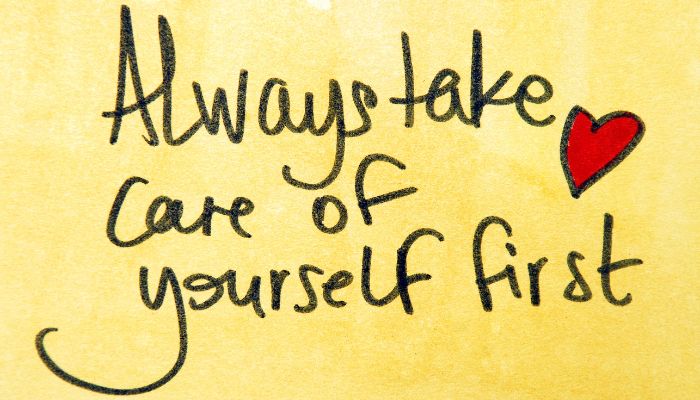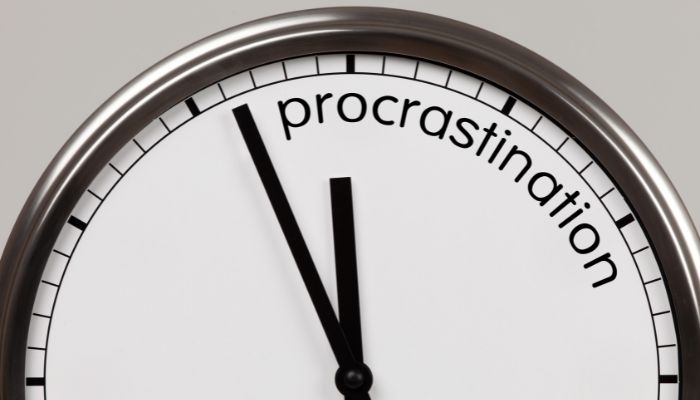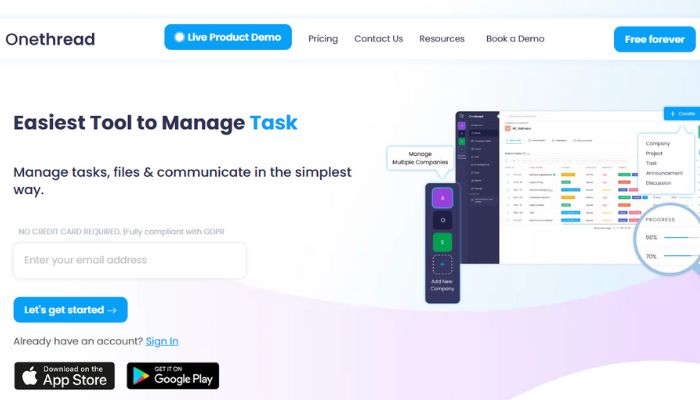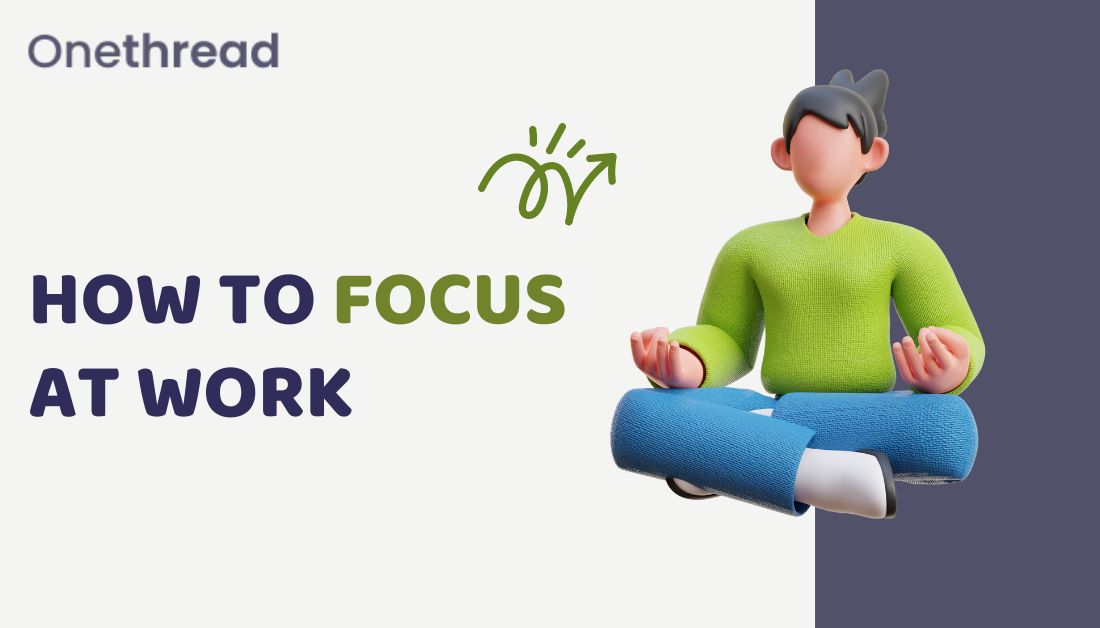Maintaining focus at work is critical to being productive and achieving your goals. It is not always easy to remain focused and avoid distractions in a busy work environment. Distractions come in many forms, such as noise, interruptions, and technology. However, by understanding your work style, creating a distraction-free workspace, managing your time effectively, building your concentration skills, staying motivated, and taking care of yourself, you can improve your focus and productivity at work.
How to Focus at Work: 9 Proven Strategies
I. Understanding Your Work Style

Everyone has their unique work style, which can significantly impact their ability to stay focused and productive at work. To begin, identify your strengths and weaknesses to determine the areas where you need to improve.
Some people work better in a collaborative environment, while others prefer to work alone. Knowing your strengths and weaknesses will help you to develop strategies to enhance your work style.
If you find that you work better in a collaborative environment, try to find opportunities to work with others. You can brainstorm ideas, ask for feedback, and collaborate on projects. If you prefer to work alone, find a quiet space where you can focus without interruptions.
Strategies for Enhancing Your Work Style
To optimize your work style and supercharge your strategies, follow these essential steps:
- Identify your work style: Before you can improve your work style, you need to know what it is. Reflect on your preferences, habits, and tendencies to understand how you work best.
- Capitalize on your strengths: Use your strengths to your advantage. If you work best in a quiet environment, find a place where you can work without distractions. If you are a visual learner, use diagrams, charts, and other visual aids to help you process information.
- Address your weaknesses: Identify the areas where you struggle and develop strategies to overcome them. For example, if you struggle with procrastination, set deadlines for yourself and use a task management tool to stay on track.
II. Creating a Distraction-Free Workspace

A cluttered workspace can make it challenging to focus and be productive. A messy desk can be distracting and lead to stress and frustration. Here are some tips to create a distraction-free workspace:
Organize Your Workspace
You can follow these essential steps to organize your workspace and get the most out of it:
- Clear the clutter: Remove any unnecessary items from your workspace to reduce distractions.
- Organize your desk: Arrange your desk in a way that makes sense for you. Keep frequently used items within reach and put everything else away.
- Personalize your space: Make your workspace your own by adding items that inspire you, such as photos, artwork, or plants.
Minimize Distractions
Here are some of the easiest steps you can take to minimize your distractions:
- Turn off notifications: Disable notifications on your phone and computer to minimize distractions.
- Close unnecessary tabs: Close any unnecessary tabs or windows on your computer to help you stay focused.
- Use noise-cancelling headphones: If you work in a noisy environment, use noise-cancelling headphones to block out distractions.
Set Boundaries with Colleagues
You can adhere to these few steps to set healthy boundaries with your colleagues while still having the harmonious work relationship:
- Establish a signal: Let your colleagues know when you need to focus by using a signal, such as a closed door or a “do not disturb” sign.
- Schedule time for interruptions: If you know that your colleagues will need to speak with you, schedule time for them to come to your office or have a quick chat.
- Communicate your boundaries: Let your colleagues know when you need to focus and ask them to respect your boundaries.
III. Managing Your Time Effectively

Time management is essential to staying focused and productive at work. By prioritizing tasks, creating a to-do list, and using time management tools, you can make the most of your time and accomplish your goals.
Prioritizing Tasks:
To prioritize your tasks effectively, you can follow these essential steps:
- Determine what is urgent: Identify tasks that need to be completed immediately.
- Identify what is important: Determine which tasks are most important to your job, goals, and priorities.
- Assess time required: Estimate the time required for each task.
- Create a priority list: Based on the urgency, importance, and time required for each task, create a priority list.
Creating a To-Do List:
While creating a to-do list is pretty easy, creating one that actually works can be challenging. Here are the basic procedures to follow to create an effective to-do list:
- Write it down: Write down all your tasks in a to-do list.
- Keep it simple: Keep your to-do list simple and manageable.
- Break down larger tasks: If you have a large task to complete, break it down into smaller, more manageable tasks.
- Prioritize your list: Use your priority list to prioritize your to-do list.
Using Time Management Tools:
To manage your time in the most efficient and effective way, here are a few steps you might want to follow:
- Set a timer: Set a timer for a specific amount of time to help you stay focused on a task.
- Use a calendar: Use a calendar to schedule your tasks and appointments.
- Use a task management tool: Use a task management tool, such as Trello or Asana, to manage your tasks and deadlines.
IV. Building Your Concentration Skills

Building concentration skills takes time and practice. However, by practicing mindfulness, developing mental stamina, and improving your attention span, you can improve your focus and productivity at work.
Practicing Mindfulness:
Here are some key pointers to keep in mind while practicing mindfulness:
- Take deep breaths: Take deep breaths to calm your mind and reduce stress.
- Use guided meditations: Use guided meditations to help you focus and clear your mind.
- Practice mindfulness exercises: Practice mindfulness exercises, such as yoga or tai chi, to improve your focus and concentration.
Developing Mental Stamina:
Here are the fundamental measures you can take to boost your mental stamina and get those brain muscles flexing:
- Take breaks: Take regular breaks to give your mind a rest and recharge.
- Build up gradually: Gradually build up your mental stamina by increasing the amount of time you can focus on a task.
- Set realistic goals: Set realistic goals for yourself and work towards them gradually.
Improving Your Attention Span:
With in creasing number of distractions around us, keeping our mind focused and attentive is being challenging with time. However, you can follow these essential steps to improve our attention span while all these background noises keep working:
- Reduce distractions: Reduce visual clutters and distractions in your environment to help you stay focused.
- Practice active listening: Practice active listening to improve your attention span.
- Read regularly: Read regularly to improve your concentration and focus.
V. Staying Motivated

Staying motivated is critical to staying focused and productive at work. By setting achievable goals, rewarding yourself for accomplishments, and finding inspiration, you can stay motivated and accomplish your goals.
Setting Achievable Goals:
Goal-setting itself is a crucial soft skill and to steer yourself to overall progress, the goals must be achievable as well. To set achievable goals, you can adhere to these crucial steps:
- Define your goals: Define your goals clearly and specifically.
- Make them achievable: Make sure your goals are achievable and realistic.
- Break them down: Break down larger goals into smaller, more manageable tasks.
Rewarding Yourself for Accomplishments:
While planned hustling can take you to the success door, you can keep yourself motivated by celebrating your accomplishments along the way so that you never lose sight of the progress that you have already made:
- Celebrate small wins: Celebrate small wins to stay motivated.
- Treat yourself: Treat yourself to something you enjoy after accomplishing a big goal.
- Recognize progress: Recognize and acknowledge your progress towards your goals.
Finding Inspiration:
Get those creativity juice flowing by embracing these indispensable steps:
- Surround yourself with inspiration: Surround yourself with people and things that inspire you.
- Focus on the bigger picture: Focus on the bigger picture and how your work fits into it.
- Stay positive: Stay positive and focus on the positive aspects of your work.
VI. Taking Care of Yourself

Taking care of yourself is essential to staying focused and productive at work. By getting enough sleep, eating healthy meals, and taking breaks, you can maintain your energy and focus throughout the day.
Getting Enough Sleep:
These are some basic things that you can maintain to ensure that you are getting enough sleep:
- Establish a routine: Establish a consistent sleep routine to help you get enough sleep.
- Create a relaxing environment: Create a relaxing environment to help you fall asleep quickly.
- Avoid screens before bed: Avoid screens before bed to help you fall asleep faster.
Eating Healthy Meals:
You can adhere to these crucial steps to ensure that you are treating your body like the temple it is and ensuring that it is properly fueled to take charge of your productivity:
- Plan your meals: Plan your meals in advance to ensure you are eating healthy, balanced meals.
- Pack healthy snacks: Pack healthy snacks to keep you energized throughout the day.
- Stay hydrated: Drink plenty of water throughout the day to stay hydrated.
Taking Breaks:
Taking breaks keeps you focused, energized and ready for taking on new challenges. Here’s how you can do it:
- Take regular breaks: Take regular breaks to give your mind and body a rest.
- Get up and move: Take a short walk or stretch to help you re-energize.
- Disconnect: Disconnect from work during your breaks to recharge your mind.
VII. Dealing with Distractions

Distractions can be a significant barrier to staying focused at work. However, by identifying the source of distractions and taking steps to minimize them, you can improve your concentration and productivity.
Identifying the Source of Distraction:
You can adhere to these crucial steps to identify and kill your common sources of distraction:
- Identify common distractions: Identify the common distractions that interfere with your work.
- Analyze your habits: Analyze your habits to see if there are any patterns or behaviors that contribute to distractions.
- Identify external factors: Identify external factors, such as noise or interruptions, that contribute to distractions.
Minimizing Distractions:
Once you have identified your distractions, it is time to minimize them by following these essential steps:
- Reduce noise: Reduce noise by using noise-cancelling headphones or working in a quiet area.
- Use productivity apps: Use productivity apps, such as Focus@Will or Freedom, to block distracting websites and apps.
- Set boundaries: Set boundaries with colleagues and clients to minimize interruptions during your work hours.
VIII. Overcoming Procrastination

Procrastination is a common obstacle to staying focused and productive at work. However, by understanding the reasons for procrastination and taking proactive steps to overcome it, you can improve your productivity.
Understanding the Reasons for Procrastination:
It’s important to first understand why you are procrastinating before you can fight against it. Here’s a few tips on how you can get to know your procrastinator self better:
- Fear of failure: Fear of failure can lead to procrastination.
- Lack of motivation: Lack of motivation can make it difficult to get started on tasks.
- Feeling overwhelmed: Feeling overwhelmed can lead to procrastination.
Overcoming Procrastination:
Now that you have figured out why you keep putting on tasks for your future self, here are a few ways you can solve them so that the to-do list doesn’t get piled up:
- Break tasks into smaller steps: Breaking tasks into smaller steps can make them more manageable.
- Use the Pomodoro technique: The Pomodoro technique involves working for a set amount of time and taking a short break, which can help you stay focused and productive.
- Create a supportive environment: Surround yourself with people who support and encourage you to overcome procrastination.
IX. Onethread a project management tool, to increase your focus at work :

Onethread is a project management tool that can help increase your focus at work by providing a centralized platform for organizing, tracking, and collaborating on tasks and projects. By using Onethread, you can streamline your workflow, prioritize tasks, and stay on top of deadlines, which can reduce distractions and increase your productivity.
Here are some ways that Onethread can be used as a strategy to increase your focus at work:
1. Centralized task management:
Onethread provides a centralized platform for managing tasks and projects. This means that all your tasks are in one place, making it easier to prioritize and track progress. You can assign tasks to team members, set due dates, and monitor progress, which can help you stay focused on the most important tasks.
2. Collaboration and communication:
Onethread provides a platform for collaboration and communication between team members. You can communicate with team members, share files, and get feedback on tasks and projects. This can help reduce distractions and ensure that everyone is on the same page, which can increase productivity.
3. Prioritization and organization:
Onethread allows you to prioritize tasks and organize them into projects. This means that you can focus on the most important tasks first and work your way down the list. By organizing your tasks and projects, you can reduce distractions and stay focused on what needs to be done.
4. Deadline management:
Onethread allows you to set deadlines for tasks and projects. This means that you can keep track of important dates and ensure that tasks are completed on time. By staying on top of deadlines, you can reduce distractions and increase productivity.
5. Time tracking:
Onethread provides time tracking features that allow you to monitor how much time you spend on each task. This can help you identify tasks that take up too much time and adjust your workflow accordingly. By optimizing your workflow, you can reduce distractions and stay focused on the most important tasks.
6. Reporting and analytics:
Onethread provides reporting and analytics features that allow you to track progress and monitor performance. You can generate reports on task completion, track time spent on tasks, and identify bottlenecks in your workflow. By monitoring your performance, you can identify areas for improvement and optimize your workflow, which can increase your focus and productivity.
Why should you consider Onethread?
The answer is “why not?”. To make it simpler, here’s a table summarizing the feature-wise benefits of Onethread :
| Feature | Benefits |
| Pricing | Affordable pricing plans for individuals and teams |
| Integration | Integrates with popular tools like Trello, Asana, etc. |
| Collaboration | Enables real-time collaboration and team communication |
| Time Tracking | Tracks time spent on tasks for accurate billing |
| Task Management | Provides a centralized platform for managing tasks and projects |
| Documentation | Offers a platform for storing and sharing project documentation |
| Templates | Includes pre-built templates for common projects and tasks |
| Easy to Use | User-friendly interface and intuitive navigation |
| Fun Synchronizing | Provides a fun and engaging way to keep team members updated on project progress |
| Optimization | Offers data analytics and reporting features for optimizing project workflows and performance |
By offering a range of features and benefits, Onethread can help teams and individuals stay organized, focused, and productive. Whether you’re looking for an intuitive task management tool or a platform for collaborative project management, Onethread has the features you need to achieve your goals.
With flexible pricing plans, easy integration, and a user-friendly interface, Onethread is an excellent choice for teams and individuals looking to streamline their workflows and increase their productivity.
In conclusion, Onethread can be a valuable tool for increasing your focus at work. By providing a centralized platform for task management, collaboration, communication, and reporting, Onethread can help you prioritize tasks, reduce distractions, and stay on top of deadlines. With Onethread, you can optimize your workflow, improve your productivity, and achieve your career goals.
Final Thoughts:
In today’s fast-paced work environment, staying focused can be a challenge. Distractions can come in many forms, from email notifications and social media alerts to chatty coworkers and a cluttered workspace. However, there are strategies and tools available that can help you increase your focus and productivity.
In this discussion, we explored several strategies for staying focused at work, including time blocking, task prioritization, and mindfulness. We also looked at Onethread, a project management tool that can help you stay organized, collaborate with your team, and optimize your workflow.
By implementing these strategies and using tools like Onethread, you can take control of your workday and maximize your productivity. Time blocking can help you eliminate distractions and focus on one task at a time, while task prioritization can help you focus on the most important tasks first.
Mindfulness techniques can help you stay centered and focused, even in a hectic work environment. And using a project management tool like Onethread can provide a centralized platform for managing tasks and projects, as well as real-time collaboration and communication with your team.
In conclusion, staying focused at work is essential for achieving your career goals and staying productive. By implementing the strategies and using the tools discussed in this article, you can increase your focus, reduce distractions, and optimize your workflow.
Whether you’re working on a complex project or managing multiple tasks, there are tools and techniques available that can help you stay on track and achieve your goals. So take control of your workday, prioritize your tasks, and use the tools and techniques that work best for you to stay focused and productive.
With a little effort and the right tools, you can achieve great things in your career and beyond.
